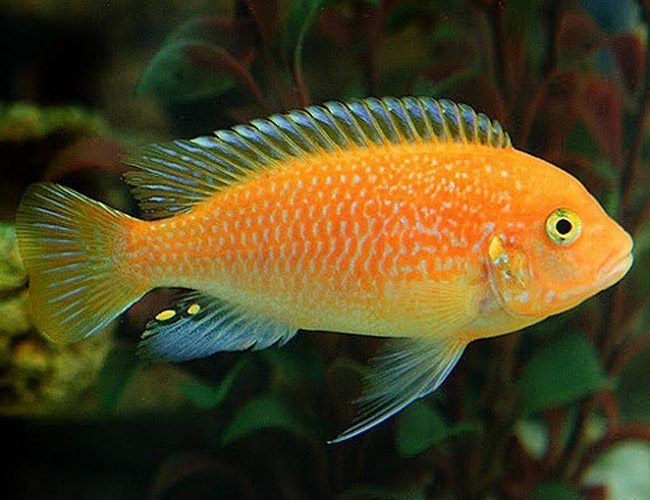

These are like Cuckoo fish, Catfish, Freshwater angelfish, among others. Some of the best tank mates are non-competitive ones to have the best results. While choosing to breed Red Zebra, it is advisable not to keep them solitary. Another delicacy they like feeding on is algae and earthworms, which is relatively healthy for them. Foods like plant matter, frozen food, and dry foods are highly recommended for this Cichlid.

The Cichlids primarily feed on the herbivorous diet, but they are omnivores. Ensure that water is changed weekly and always keep the aquarium clean and beautiful. They prefer slightly alkaline water instead of acidic water used mainly by American Cichlids.Įnough food and clean water must promote their breeding, health, growth, and multiplication. Suitable filters and a heater are necessary for the tank to control the water temperature, 76 to 84 degrees. The Red Zebra, Metriaclima estherae, has solid yellow-orange coloration, and males may show a faint blue sheen.Read How Long Can Cichlids Go Without Food? (Best Solutions When Away)įine pebbles and many hiding corners around the tank will help this Mbuna fish from Africa be more playful and hide. They are one of the most popular cichlids exported due to their bright color and lively behavior. Malawian and Victorian cichlids are similar in care and temperament, leading to fish from these two lakes being grouped together in the hobby. Several hundreds species of cichlid are found in Lake Malawi, along with many regional variations, but Lake Victoria has far fewer due to the introduction of invasive predators. Most cichlids in both lakes are rock-dwellers. They seldom stray far from the rocky bottoms and sides of the lake and will quickly dart into the rocks to hide. As with all cichlids, they are very territorial and will not tolerate other cichlids around "their" crevice. Two of the most popular groups of these cichlids are the "Peacocks" (mostly the Aulonocara genus) and "Mbuna's" (native term for "rock fish" and including the genera Pseudotropheus, Labidochromis, Maylandia, Melanochromis and others). While aggression and compatibility can vary from species to species, mixing Mbuna and Peacock cichlids is not usually recommended. Mbuna cichlids tend to be more aggressive and may bully the usually more passive Peacocks but some Mbuna cichlids are far more aggressive than others.

Several other groups of cichlids can also be found from these lakes, some of which can be large and aggressive predators research all choices carefully.ĭecor for a Malawi/Victoria aquarium should be very rocky. Rock "piles" and shelf-like backgrounds are common designs and can be made from tufa rock, lava rock or slate. Substrates can range from the whitish coral sand used in saltwater aquariums to black freshwater sand or even regular decorative gravels. Visit That Fish Blog for more information from our marine biologists and aquarium staff on African cichlids and many other topics! Wood tends to lower pH and is not usually recommended for African cichlid aquariums. ** Note about scientific naming: As African cichlids are continually being discovered and redescribed, many scientific names have been changed over time. One of the most affected groups are the fish from the genera Pseudotropheus, Maylandia, and Metriaclima. Many of these fish were originally classified in the Pseudotropheus genus but the "Zebra" group was separated into the Maylandia genus created in 1984. In 1997, the new Metriaclima genus was created as a proposed "more correct" genus to replace Maylandia.

However, the true "correctness" of the classifications is still highly debated and those three genera are still used interchangeably to refer to the same fish in some references.In the wild, this stunning species is found over rocky habitats where it feeds mainly on the phytoplankton in the water column. It belongs to the Mbuna group of cichlids. The aquarium should be at least 4ft long and aquascaped to emulate that rocky reef effect. Décor such as ocean rock can be used to build sturdy structures which stretch from the base of the tank to near the surface of the water. These structures should be built with the purpose of creating many crevices for the fish to explore but constructed in such a way so as to keep the rocks stable if the fish start to dig around and underneath them. Although a substrate of coral sand or Aragonite is often recommended to help to keep the water hard and alkaline, Mbuna feel safer and show better colours over a darker substrate. The Aragonite or coral sand can always be placed into a mesh bag and kept inside the external filter for buffering purposes.


 0 kommentar(er)
0 kommentar(er)
